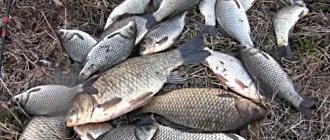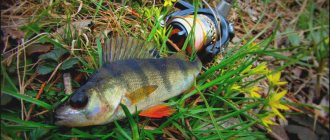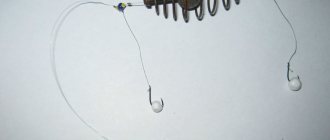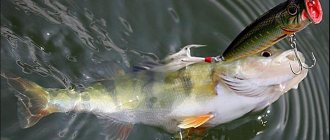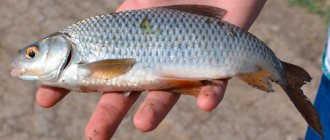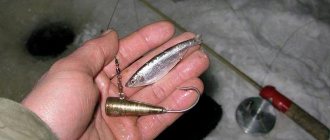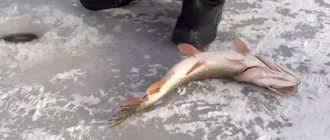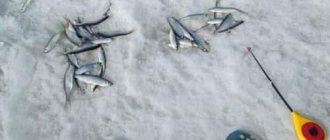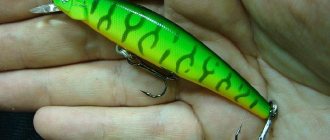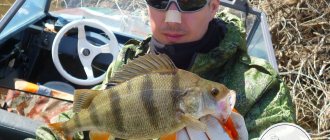Greetings, dear fishermen. In today's article we will talk about catching perch using an ultralight spinning rod.
This method of fishing is very effective, unlike conventional spinning, and most often this fish becomes the prey of a novice spinning angler. In general, perch is caught quite often when fishing with light bait, but you still need to know some features so as not to be left without a catch.
Today we will try to figure out how to catch perch using ultralight.
Where to look for perch
There are perch in almost any body of water, with the exception of very small rivers and some lakes where there is a lot of rotan. Large perch most often lives in the depths away from the shore and it is difficult to get them without a boat, however, you can catch them from the shore in the evening and morning, when peaceful fish approach the shore.
Medium and small perch do not like fast currents; you need to look for them in areas near the shore where the current is insignificant. It is best if there is vegetation in this place in which the perch can hide.
To select a promising place, you can visually inspect the reservoir, usually when the perch is feeding, seagulls are circling over this place. Fishermen call such a place a cauldron, and if you manage to get to this place, then you are guaranteed a catch.
Unfortunately, usually the boilers are located quite far away, and in this case it remains to fish the coastline. As I already said, perch does not like currents, and the best places to catch them will be various creeks, areas in front of streams flowing into the river, etc. There are a lot of fry in such places.

If you find a backwater, the most promising place will be the exit from the backwater; this is where the perches are waiting for the fry, tired from fighting the current, who are swimming to rest. In front of streams, there are usually small depressions, and perch like to stand there. In such places you can often see it attacking the fry, which is picking up food from the stream.
Wiring technique
There are no secrets here. If fishing is carried out from a boat, step-by-step retrieval is used, carried out in jerks, with long casts. From the shore the story is pretty much the same. Animating the bait with the actions of the fisherman himself plays a much larger role.
But there are many varieties of bait that behave almost like real crustaceans or fry, which is more acceptable for those who are not yet able to independently “breathe life” into the soulless body of a dummy.
Lures for perch
When perch is active, it can be caught with almost any bait, but today we will look at the most accessible and popular twisters and spinners. The spinner is the most versatile bait for any fish, but perch loves it most. Since we catch perch using ultralight, the spinners must be appropriate.
Typically, rotators no heavier than 4-5 grams are used. Perch loves bright colors, but on a very sunny day, you can use natural colors. Small perch are best caught on orange and bright red spinners, while larger ones prefer green and pale yellow ones.
The shape of the spinners depends on the fishing conditions. If you are fishing with the current, it is better to use spinners with a rounded petal of the “Aglia” type. Such a spinner can be driven quite slowly without losing the rotation of the petal.
For guiding against the current, “Long” type petals work best. This type of petal will rotate quite slowly when exposed to current. It is the slow rotation of the petal that provokes the perch to bite.
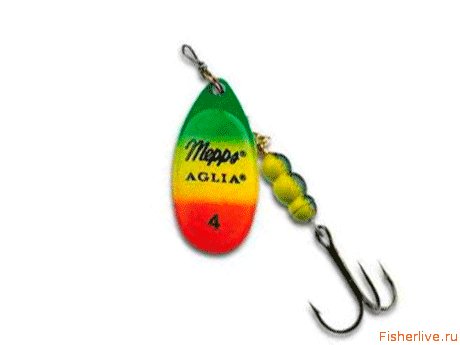
Twisters are used when perch activity is low. The color of the rubber must be selected experimentally, since in different bodies of water on different days, fish prefer different colors. Using a twister on a retractable leash shows very good results.
Types of ultralight baits
When talking about spinning with an ultralight rod, one cannot ignore such an important thing as baits designed specifically for the lightweight version. However, you are unlikely to find any fundamental differences here. All that should be noted is that there are two main types of such baits - silicone and live bait.
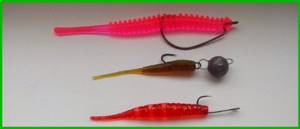
They are also called active (i.e. playing) and passive types of bait. The first of them are created from a kind of edible synthetic material, have a length of no more than two centimeters (usually much less) and weigh only a few grams.
Small-sized fish willingly peck at them due to the fact that these baits behave in the water like real fry - they play with their tails and their entire appearance generally resembles a real living creature, without the clumsiness and unnaturalness in movements inherent in other units.
The second type usually includes live bait. These are various insect larvae, earthworms and other representatives of the insectoid kingdom. Sometimes, fishermen use fry, crustaceans and other fresh water inhabitants, which belong to a kind of “lower caste”.
But basically, all these baits were purchased by them in specialized stores, where they are represented by the widest range of products. One should not be dismissive of all kinds of worms, slugs and other types of passive baits, because they contain very tangible potential.
And no, they are not capable of independent play, but you need to understand that if you animate them yourself, the chances of attracting a potential redfin (and not only) fish increases significantly, and even in comparison with the vaunted silicone tailed synthetic fry, which on the one hand She is wonderfully able to parody a living being, but on the other hand, she is limited to a narrow range of behavioral patterns.
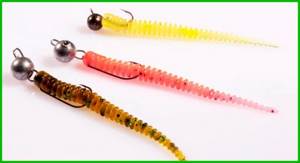
An experienced spinning angler is able to independently make a passive bait play in a way that an artificial thing would never do. And this fact must be clearly understood. Thus, the first active type of bait is most suitable for beginner anglers who have chosen fishing with a lightweight spinning rod, and the second type is for their more seasoned older comrades, wise with special experience and skills that have been developed over decades.
It should also be noted that there are types of baits that work perfectly together with an ultra-light fishing rod. Here light wobblers like shad and crack come to mind. These wobblers reach relatively small sizes. Crack is a “specialist” in catching active predators, which includes the old man - perch. This bait behaves quite freely in the water and even tries to pretend to be something endowed with the rudiments of intelligence.
A shad is approximately the same rake, only from a different angle. The same advantages that crown crack are characteristic of shad, with the only difference being that the latter bait has not proven itself so well when fishing in fast mountain currents.
It is intended rather for thoughtful fishing from the shore. than for a fierce confrontation with two opponents at once - the mighty wild nature and the tightly knit trout. But in this case, we are most interested in ordinary perch, so both crack and shad, as bright representatives of the wobbler family, are quite appropriate for using them in conjunction with a lightweight spinning rod.
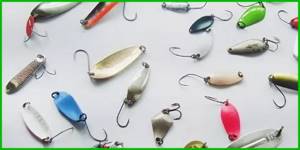
Catching perch with ultralight is also possible with metal spoons. At all times, iron has surpassed synthetics in popularity. This was primarily due to:
- with the unavailability of high-tech materials in the recent past;
- with the high cost of plastic and silicone products;
- with the distrust of representatives of the fishing community towards all kinds of new products.
The most acceptable options here would be spinners such as oscillating and rotating, which are traditionally effective in catching humpback whales. In the first case, we are talking about catching a humpback from a boat at some distance from the shore, at a depth of more than two and a half meters, and in the second, we can talk about hunting for a daring mischief maker in creeks completely covered with tall river grass.
The spinner type is suitable for active fishing a little more than its counterpart. They are quite good at overcoming an obstacle course in the form of all kinds of snags, tangles of plants and other utensils resting at the bottom of rivers, lakes, ponds and other bodies of water.
One of the most popular types of spinners is the so-called microspinner, which reaches a diameter of only one and a half centimeters (plus or minus one centimeter depending on the model and manufacturer). There are a great many different varieties of this spinner, both factory-made and hand-made.
But that's not all. In addition to the products indicated above, others are in considerable demand, which we will not talk about in this article due to their significant number of types and manufacturers.
Below is a unique rating of the most acceptable, adequate and popular ultra-light baits:
- Crazy Fish Crayfish 1.8
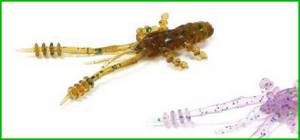
- Crazy Fish Polaris 2
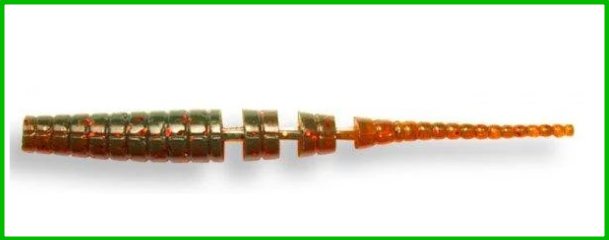
- Mepps Aglia Longue

- Bait Breath Needle Real Fry 2
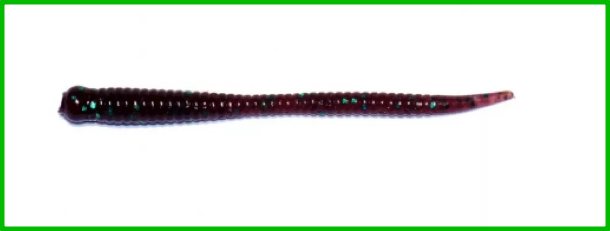
- Reins Aji Ringer Shad
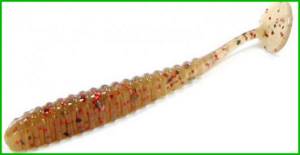
- Smith Pure

- Smith Jade
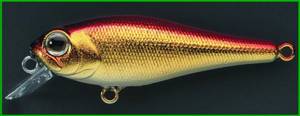
- Lucky John King Leech
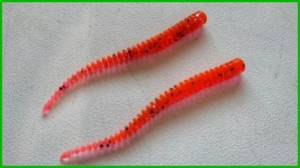
- Lucky Craft Pointer 48
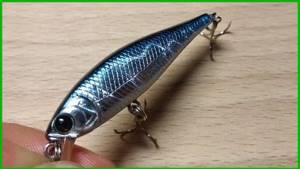
- Sprut Taburo Trout
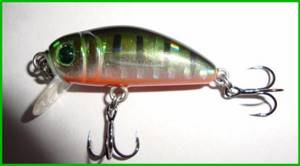
- Daiwa Skinny Spoon
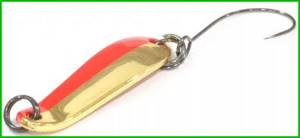
- Blue Fox Vibrax Original
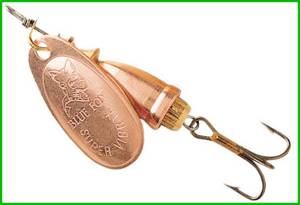
- SV Fishing Koketka
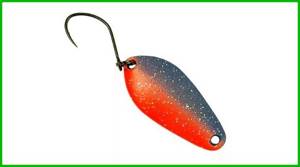
- Megabass Live-X Smolt
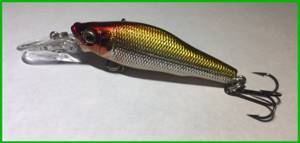
- Kosadaka Ion XS32
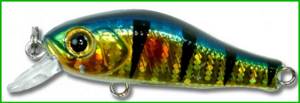
The models presented in this top are not arranged in descending order of popularity and (or) their effectiveness, but rather simply in random order, so you should not judge them by the place they occupy in the provided list of lures for light spinning rods.
Tactics for catching perch with ultralight
So we chose a place, attached the bait, now we need to start fishing. First, let's talk about spinner fishing tactics. If the chosen place is not deep, then you should fish the entire radius relative to the angler.
Bites in such places most often occur in an unexpected place. If you are fishing in a creek, you need to fish the exit from it, and move the spoon both with the current and against it. You need to carry the lure all the way to the shore.
Perch rarely takes near the shore, but by moving the lure to the shore, you can see if the perch is following the lure. If a fish follows the bait, but does not take it, you should change the line to force him to attack; if this does not help, you need to change the bait.
The best option for wiring a turntable is uneven wiring with pauses. It is during the pause that the perch most often attacks. When I just started catching perch with ultralight, I noticed an interesting feature: moving the spoon along the shore with the current, the perch followed the spoon, but at the slightest snag on the grass, a bite followed.
He probably bites because he just crashes into the spoon without having time to stop. Then I tried to stop the spoon in the same way, but there was no bite, apparently because the spoon fell to the bottom. Then I took a spoon with a hairy tee, and the bite started, because during a pause, the hairy hook did not fall immediately, but lingered for a few fractions of a second in the water column, allowing the perch to stumble upon it.
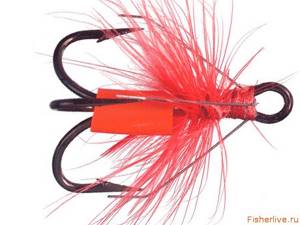
But there are times when the perch doesn’t want to take the spinner, and in this case a twister on a jig head can save you. You need to select the wiring yourself, since different wiring operates at different times. For wiring, you can use a regular step, dragging along the bottom, in general, you need to experiment. The retractable leash also performs well.
Remember that perch is a schooling fish, and after catching one, do not rush to change place; most likely, both the second and the fifth perch will bite.
Conclusion
As you can see, catching perch with ultralight is possible and necessary. This is good practice for both beginners and experienced fishermen. Try it, select baits and baits, and you won’t be left without a catch.
And to make sure you catch at least one fish, I’ll tell you my little secret. If it doesn’t bite at all, but you want to catch at least something, I take a “meps aglia” lure, number 1, with a rainbow color (green, yellow, orange), and move it along the shore with the current.
This secret allows you to catch fish almost immediately. I tried this method on the Oka, in various places, and always caught small perches and chubs. In general, try, experiment, and everything will work out for you.
Since I have been fishing with ultralight relatively recently, I will be very glad if you tell me some secrets in the comments, I will definitely try them out and tell you about my successes in the following articles.
Catching large perch with ultralight
Lately, fishing with an ultra-light spinning rod up to two and a half grams has given me an incomparable sensation. Sometimes it happens that even a perch about a hundred grams in size with a clear bite on an ultralight is more memorable than a large asp caught with more powerful gear. Of course, the sizes of the fish are absolutely incomparable, but if you take the feeling of fishing, each one is wonderful in its own way.
That is why, on my long-awaited day off, I decided not to take fishing gear of different power, but limited myself to only one: an ultralight Norstream Areator 582XUL rod with a Shimano Soare C2000PGSS reel. I planned to catch perch, and where it reaches a size that is frightening for such gear. This spinning rod is designed for “aryan” fishing, and, according to the experience of previous fishing trips, it is excellent at “tying” fish, but its holding capacity is only so-so. It is well suited for “relaxed” trout fishing on the platform, where the only shelter available is an aerator and some kind of bridge, but obviously not for a lake with a huge amount of algae, in which the fish being caught can escape without any problems. But I didn’t care much about that, I just wanted to relax my soul and catch a variety of perch.
This time we arrived in the dark and greeted the dawn fully armed. Having hidden a more powerful rod along the boat’s cylinder (you never know!), I swam out. From time to time, flocks of fleeing leucorrhoea could be seen on the surface.
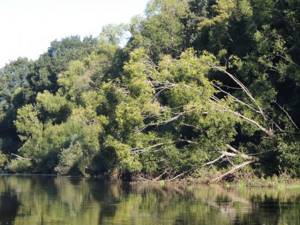
When trying to fish such places, the perch pecked, small even for an ultralight. I tried to increase the size of the bait and hung a fleshy slug, which was obtained from a vibrotail as a result of a timid bite from a small striped one. At first he was nibbled by the same small perch, which found it difficult to swallow such a piece. Then these pinching and biting stopped with a strong blow, which clearly stood out against the background of the hooliganism of the petty sailors. How great it is when the rod bends from the handle, and the brake crackles, releasing the braided line! The first decent-sized perch escaped with a slight scare and a small hole from the hook.
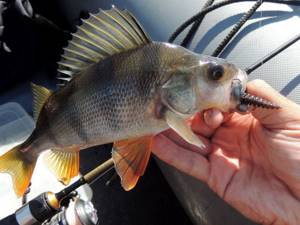
The “Areator” type is well reflected in the preservation of the perch’s lips: for the most part, only a hole from the hook remains on them, and not a torn strip from the chin to the nose. Then a funny thing happened, which later repeated itself again. While dragging a small perch, I felt a blow, after which the nature of the fishing changed. Now there was clearly a larger fish at the other end of the line, and it behaved calmly and simply walked from side to side. I carefully pulled it towards the boat, and the connection point between the braid and fluorocarbon had already appeared, but the pike got off before I saw it itself.
These are the kind of robbers who live here! I’ll probably visit them in the fall with the appropriate gear, but now I’ll return to the perch. Of course, his bite stopped at this point, and I was forced to continue the search. Moving under an island with grass, I dropped anchor and made the first cast to the edge. After the first steps I felt a slight pressure, and on the next step I felt a clear bite. To keep the fish out of the grass, I lifted the rod up and began to quickly rotate the reel handle. After some time, a fat perch appeared on the surface, such that even on a more powerful, light tackle it would have been a very desirable trophy.
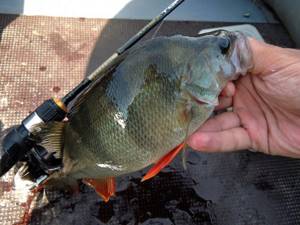
There was another one after that, but I couldn’t do anything with it. Then he returned to smaller baits and began to catch small perches, sometimes diluting the catch with larger specimens.
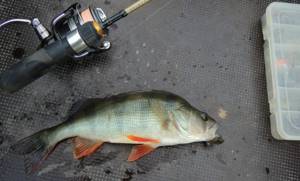
Whatever you say, today's favorite was clearly the black slug. I got it from one of the LBaits vibrohocks that I had lying around from the exhibition before last.
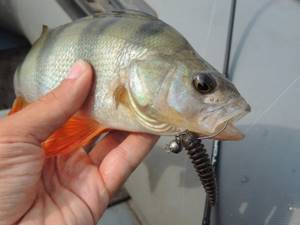
The fishing turned out to be very unique in terms of the gear used. According to the conditions, they were not entirely suitable, but they fully justified my goals and objectives of obtaining maximum sensations from fishing.
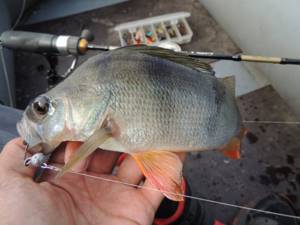
Now all that remains is to catch some decent chub on stream to finally reconsider your views on ultralight.
Share
Features of catching perch in the spring on turntables
So, you will need an ultralight rod with a test weight of 0 to 5 g and a spinner weighing 2 g. The main thing is that it is working. The installation of the gear is usual: a cord, that is, a braided fishing line, a snap hook and a spinner, so there’s not much to tell here.
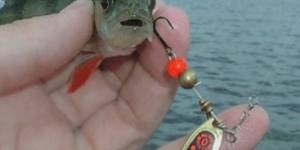
It is necessary to pay attention to the fact that when fishing with light baits, the risk of the formation of a so-called beard increases significantly, so it is necessary to ensure that after casting there is no loop on the reel, otherwise the next cast may end up with a tangled cord. Wiring when working with turntables is uniform, but the speed of rotation of the coil must be adjusted depending on the depth at which you plan to do the wiring.
Ultralight Club
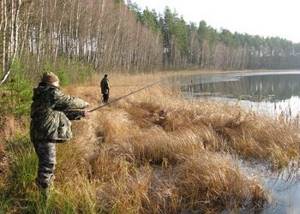
Shishlyannikov A.
Ultralight in the fall is not only about enjoying nature and a pleasant trip with a light spinning rod, but also an exciting fishing process, which has some distinctive features. For example, not only you have the opportunity to see the fish, but it also sees, and more often, hears you... What does it take to experience all the delights of ultralight fishing in the fall? It would seem not much: a portion of initiative, a day free from work or study, and the shore of a reservoir, the choice of which will be based on the personal preferences of the fisherman. Small rivers of the Volgograd region: Liska, Chir, Sakarka, Sukhaya Mechetka, as well as eriki and lakes of the Volga-Akhtuba floodplain are an excellent testing ground for twitching in general, and in particular for autumn twitching. But often a person who has the “right” gear and subtle, outstanding technique can be left without a single bite. Personally, I made a lot of mistakes on the way to understanding the art of twitching. But now I can share my experience.
Equipment and gear. Seasonal features.
One of the distinctive features of ultralight fishing is constant movement along the coastline with minor stops, so special attention should be paid to the lightness and comfort of clothing and equipment. The time of year dictates its own rules: sudden changes in weather, rain, and wind require waterproofing and windproofness. There may be water and mud obstacles along the way, and wading boots will be the solution. It seems that everything is natural... But the slightest miscalculation, and fishing from an aesthetic pastime will turn into a mockery of one’s own body.
I, like many fishermen, had to start from scratch. Fishing in old boots and jeans turned into horror. Wet feet and a chronically cold lower back drove me to the counters of sportswear stores, where I could find: a set of thermal underwear, ski overalls and a jacket. The question of the quality of thermal underwear rather depends on the material wealth of the fisherman and his worldview. Some people just don’t like the feeling of wearing a cheap thing, some don’t care, some don’t care, but they can’t afford an expensive one. I can assure you that, having changed several sets, I did not feel a direct relationship between the quality of the thermal suit and the increasing price tag. But it’s better not to skimp on a jacket and overalls. It is almost impossible to get inexpensive, waterproof, windproof clothing that wicks moisture away from the body.
As for gear, in my opinion, in the fall it’s worth relying on versatility. During this period, the likelihood of a large fish grabbing a hold of a large fish, for example, a pike or a vagrant asp, is greater than ever. In autumn, it is also increasingly necessary to look for fish in the deepest places, so it is desirable that the stick could also serve for fishing with microjigs, that is, it should be loud enough and rigid enough.
In general, choosing an ultralight set to suit your conditions is a very difficult topic. I think I will write about this in more detail separately.
Choosing a location. Lake surprises
Having arrived directly at the reservoir, we will take into account the main feature of autumn - the lack of time - and begin to determine the most promising fishing spot. Most often, I was able to find fish near half-submerged bushes, snags, tufts of settled, drooping aquatic vegetation located a short distance from the general mass, the border of grass and the “clean” bottom. But, fortunately for the modern fisherman, not everything is so banal. An interesting example is the Latoshinsky quarry (northern part of Volgograd, behind the hydroelectric power station village). The scene of action is a huge, by the standards of steppe lakes, water area with thick snags and sandy beaches, holes up to 10 meters and shallow backwaters. Beach, clean sand, depth 20 centimeters, 7 meters away there is a dark strip of landfall (as it later turned out, up to 3 meters) - a classic perch place, but after the wobbler touches the bottom, a pike is pleased to come out. A quick change of bait, a slightly adjusted retrieve and... strike! The squeal of an unprepared clutch... But the hands do their job regardless of the consciousness, overwhelmed by emotions and adrenaline. And here it is, pike - rather the exception than the rule. The same beach also worked on other days specifically for toothy ones, when similar neighboring places shot exclusively for perch.
It is also worth noting the peculiarity of floodplain lakes, which are often connected to each other by eriks or dams. The exits of the latter into lakes almost always attract predators with a light current and an expanded food supply created by the migration of peaceful fish and all kinds of living creatures. In the area of the Kapyarskaya floodplain, I often caught such places. Erik Peschanka shot especially brightly in the area just above the ford. Perch and pike seemed to be lining up for the bait. That's just one episode.
...Another wiring of a subsurface wobbler. An arrow is separated from the coastal reeds. Impact!.. Disappearance... Instantly I place the bait along the same trajectory. Wiring. I've almost passed the first bite. Attack from below - candle! The pike flies off in one direction, the wobbler in the other. Trembling knees. It's a shame. The third attempt, which almost rarely ends successfully when using the same bait. Well, what if? And then something happens! The pike jumps out of the water and attacks the bait from the air! Splashes, noise, cord tension... Well, I finally got it! And at the very moment of delight and jubilation before the subsequent struggle... the fishing line sagged. I took a bite... Admiration for what I saw mixed with the bitterness of losing a working bait... It happens! Moreover, you cannot give preference to perch or pike when exploring the water area; they, as a rule, react to bait according to the “first-time, first-time” system. After all, we usually create an imitation of prey: a wounded fish, a frightened fry, or simply carelessly moving living creatures that have approached the predator at a minimum distance. Such objects are equally loved by both pike and perch.
The river is unpredictable
The main difference between a river and a lake is the presence of a current, a constant change in the topography (bed, coastline, the formation of new edges, holes), and, consequently, parking and hunting grounds for fish. A river is not a body of water that can be studied once and for all. Therefore, fishing becomes more and more interesting from year to year. Although there is also some system here.
First of all, I try to catch coastal snags, dams above and whirlpools below beaver dams (they can be found on small rivers of the Don basin: Sakarka, Liska, etc.), local holes, exits from them, places of sharp turns in the channel, whirlpools above and below fords Sometimes the mouths of rivers that flow into a larger body of water also bring good luck. But here there is a high probability of encountering poacher’s nets and losing your favorite wobbler. Also worthy of attention are coastal bushy plants with a half-washed root system, where I was able to find perch camps on floodplain eriks, and pike ambushes on small rivers. It would be a crime to pass by coastal reed thickets (popularly called reeds) or islands, but you still shouldn’t get hung up on them: 2-3 baits, 2-3 retrieves each, and if there are no exits or bites, run on, because there’s time Less and less!
But such places can be found on any of the small rivers. Cape, light current, wall of reeds, depth along the riverbed 2-2.5 meters. The place is ideal: behind the dense vegetation I am not noticeable to the fish, and it continues to actively feed, giving itself away with periodic pops. It is extremely convenient to deliver bait to the scene of action from a sandy cape. Accurate casting along the bank upstream - I shoot the first most impatient pike with a Pensil walker from Angler's. I wait about ten minutes for everything to calm down, change the bait to a Jackal Mask minnow seven centimeters long, absolutely without “my game”, 4-5 casts - I take two more pike. I wait ten to fifteen minutes and catch the most passive predators with a pot-bellied fat IMA Imatetra di or a Lucky Craft Deep Cra-Pea shad with a very active “own game” - plus one more pike. Then I see the point of staying in this place for about ten minutes with a smaller wolf (for example, Towadi) - and now there are four perch in the standings.
Fishing technique. Basic part
In autumn, ultralight is no less interesting than in summer: it is the same subtle, aesthetic and emotional fishing, shaded by the colors of the new season. The emotionality and aesthetics of this type of fishing lies in the ability to see the game of the wobbler you create, as well as the moments when the bait is released and attacked by a predator, because the water is clearer than in summer. In my opinion, these are the most exciting moments of fishing. My autumn twitching began with a school of river perch. I didn’t have to work hard to get a bite. But I wanted to catch on every retrieve, and not every third.
Then I had to deal with a “harmful” single autumn perch, which refused to respond to “perch jerking”, and to “long jerk” retrieves, and to many other variations. I watched. I distinguished two options for the state of the fish: the first - the perch is feeding, the second - is in the process of digesting the eaten fish, but is not averse to profiting from a gaping or shot fry. However, the technique of autumn twitching for both options is almost the same - it will be dominated by short, sharp shudders of the wobbler with long pauses, simulating a wounded fry without a definite trajectory of movement. Moreover, when catching perch, you should perform 2-3 very small and frequent jerks and give a pause of 2-4 seconds, during which the wobbler should completely stop and begin to perform movements depending on its buoyancy.
In the fall, suspenders (lures with neutral buoyancy) work best for me, but with the right approach, sinking models do not disappoint. The suspender will pause and imitate a confused live fish. Whereas a sinking wobbler will fall down, creating the illusion of a fry dying. And to determine which of the “prey” the fish you are catching likes is your task. It is at the end of the pause that the bite most often occurs. It may look like a confident blow or a sagging thread. Next, you will have to experiment and find the key to the “fish mood” through various combinations of changing pauses and jerks.
Another wiring option is possible, which I use for catching perch exclusively in the fall: playing with the slack of the cord is done in such a way that the wobbler in the water column performs the movements of the “walking” walker as slowly and evenly as possible (IMPORTANT: the bait should not have any “game of its own” "). The bite will be felt as a blow or a pull. The fundamental difference from twitching at other times of the year will be the maximum reduction in the intensity and speed of the retrieve, which is due to the passivity of the fish due to the low temperature. However, do not forget that there are exceptions to every rule!
Where to start with perch
In my hunt for a striped predator, wobblers performed well: Mask 75 from Jackallbros, Orbit 65MR-S SP from Zip Baits and SC Natia-ZG 55SP from Daiwa, perfectly complementing each other and covering the depth range from 0.3 to 2 meters. You can also use smaller “pinocchio” type MasuMasters 48F or 38F: the catch will directly depend on the preference of the fish and the angler’s ability to creatively present the bait. In the classic version, Mask 75 does not have “its own game” at all and works well in conditions of weak or no current. The Orbit 65MR holds a strong current well, trembles slightly with any movement of the rod, and works in tandem with the Mask75. Daivo's SC Natia-ZG 55SP is more versatile. With simple manipulations it is easy to achieve a lively “game” or the absence of any movements. You need to have this wobbler in your box in a trout color. Without it, the set will be incomplete. In late autumn, the wide range of movements of this wobbler brings it to the forefront in catching perch.
A few words about toothy
Late autumn is absolutely not the time when pike grab everything. It's cold, and she doesn't intend to make unnecessary movements. But it still “responds” to ultralight baits. In order to seduce a toothy predator on a date with us, we will start from the technique described above. In it we should increase the number of jerks and their amplitude to three or four, and the pause should be 4-6 seconds. And the pike will not let you get bored, especially if the fishing is done near snags, where forcing events with ultra-thin gear is inevitable. Perhaps the fish will come out for the bait - then, in order to provoke a bite, it is advisable to change the direction of the retrieve and slightly reduce the amplitude of the jerks of the wobbler. If the predator continues to ignore all your efforts, then you should quickly change the “pinocchio” to one radically different from the previous one and catch the interested pike. In some cases, this technique also helps when catching passive large perch.
Orbit 65MR-S SP wobblers from Zip Baits performed well; TinyFry 50SP from Jackallbros and a budget minnow CNK 75F from GROWS CULTURE, which you should have at least to determine the presence of poaching gear or its remains. Each of these wobblers complements the other, and in this configuration they are the minimum set, allowing even a novice fisherman to “go from scratch” when mastering the basic technique from the first fishing. However, among the huge number of ultralight wobblers provided to us by the Japanese industry and not only, everyone can choose their own combination of baits and the key to their individual “behavior”, on which “performance” will depend.
So why do you need to select wobblers, experiment with wiring, and assemble ultra-thin tackle? All in order to experience a hard blow, emotions, the extreme strength of the gear... and a feeling, an exceptional fishing feeling of happiness when catching a relatively small fish, or indeed any fish. And all this is not there, somewhere under water, but before our eyes, 5-10 meters away! Exit, attack from bottom to top with a candle! The wobbler and the pike fall a meter apart. Oh! Next move: exit, tangential side attack! Was it a mistake again? My knees begin to tremble, and my hands lose the precision of my movements... Having overcome the trembling and excitement, I manage to make another cast. What is this? Candle - attack from top to bottom! A sea of splashes! Eat! The friction clutch squealed, the ringing music of the line and rod can be heard, working to the maximum! A jerk, another jerk. It's hard to breathe. The fish is about to win. Trembling and uncertainty fade into oblivion. No, that was not the case, just another minute and the resistance was broken. Here she is, a two-kilogram beauty, standing parallel to the shore. A slight movement of the hand, and the prey on the shore nobly moves its fins. The jubilation of the “puppeteer” and his 5-centimeter subordinate, awarded, like orders, with new battle scars.
Minus is a problem
When the air temperature approaches zero and steadily begins to “walk” in the range from +3 to -1, a thin line of ice has already formed on the banks of small rivers, another feature of fishing in late autumn is revealed - freezing of the line and rings. This problem seriously affects the quality of twitching and the wear rate of the thread, which increases significantly. The strength of the cord also decreases. But there is no need to give up fishing because of this. In the modern fishing industry, there are already liquids that prevent the freezing process, such as KOSADAKA and others. And in the absence of special equipment, you can use ordinary vegetable oil. And then even a light frost is not a hindrance to you.
Fishing is great in this weather on the river. Liska, where it is at this time that pike become active and perch can be found. Or in the places where floodplain eriks flow into the Volga or Akhtuba, where large perch often gather in schools and begin hunting.
Catch for fun
Ultralight is not yet very widespread among Volgograd fishermen. Perhaps this is due to the presence of large rivers near the city - the Volga, Don, Akhtuba, and being spoiled by large fish. But, in my opinion, ultralight, as an alternative fishing method, should have its place and development. Considering the degree of employment of the average city resident, this style allows you to reduce the time spent on fishing while maintaining the aesthetic pleasure of such a pastime. It also provides enormous potential for expanding the range of actions. Ultra Light is creativity and manipulation at its most extreme! And the gold of coastal forests and fields, the transparency of the water, perhaps a light drizzle and the sun breaking through the clouds complement the palette of sensations obtained on the reservoir.
